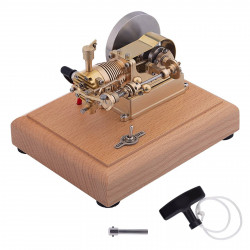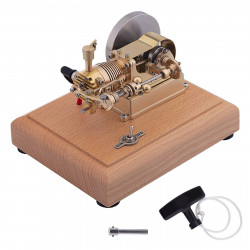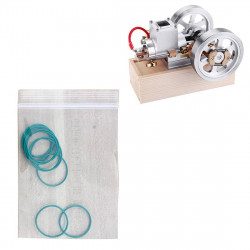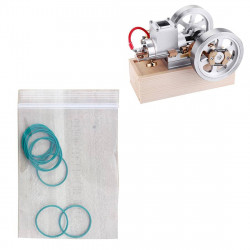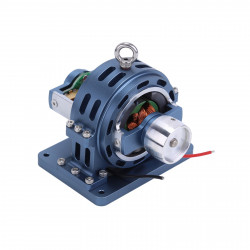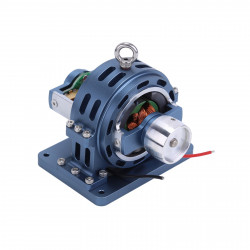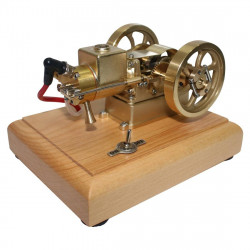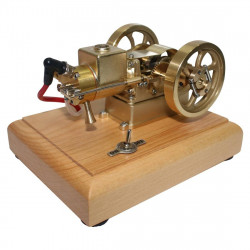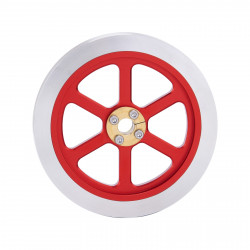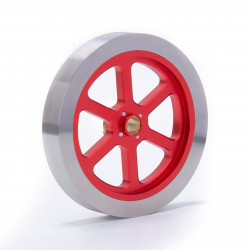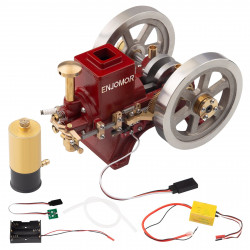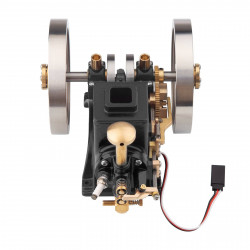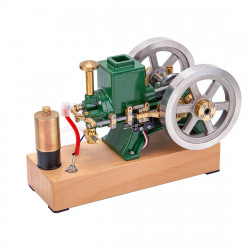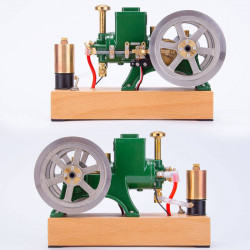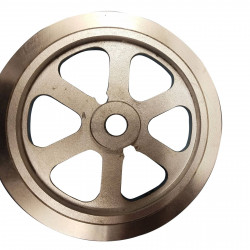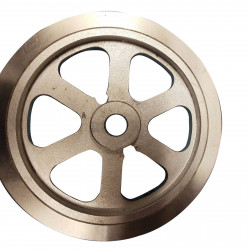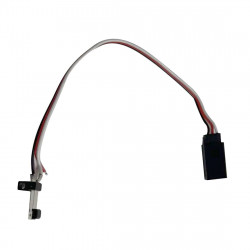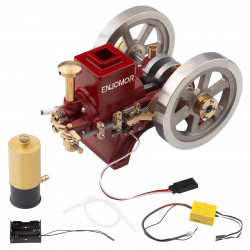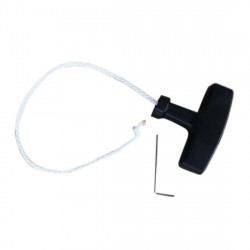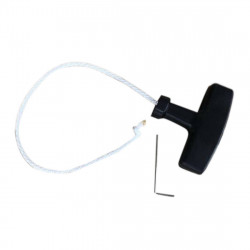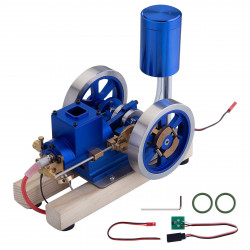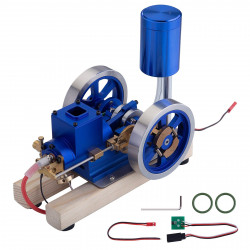Hit and miss engines are among the oldest and most dependable equipment today. These engines hold a rich history and people have used them in various applications. This blog post will examine the history, applications, and operation of the hit-and-miss engine.
A Brief History of the Hit and Miss Engine
An example of an internal combustion engine developed in the late 1800s is the hit and miss engine. It can be identified by the unique sound of the engine "hitting" and "missing" when the flywheel turns.
In the past, hit-and-miss engines were commonly used to power various devices like generators and water pumps. It was the first engine designed for the commercial market to be mass-produced.
German engineer Rudolf Diesel created the first hit-and-miss engine in 1891. Engineers designed Diesel's engine to serve as a stationary industrial power source for mills and factories. But as other technologies emerged, the hit-and-miss engine lost popularity and was finally phased out.
In the early 1900s, the hit-and-miss engine gained popularity in the US. It was utilized then for several purposes, including pumping and washing machines. In the 20th century, the engine was used in many different ways, like powering boats, farming equipment, and early cars.
Before the mid-20th century, the hit-and-miss engine was popular. However, more modern and efficient engines were introduced, leading to its decline in popularity. Some applications still use the hit-and-miss engine today, such as vintage tractors and other equipment. Its popularity has gone down, but it is still in use.
How Does a Hit and Miss Model Engine Work?
Hit-and-miss engines use a combination of air and fuel for power. The spark plug ignites the gasoline after injecting it into the engine's cylinders. The expanding gases from the ignited fuel press against the piston to produce power.
The governor on the hit-and-miss engine regulates its speed, setting it apart from other engines. The governor is an apparatus that detects the engine's speed and modifies the fuel mixture to control the speed. Because of this, the engine can operate at a constant pace no matter what the load is.
Working Principle Explanation - The "Hit and Miss" Engine
1st, we will look at the "Hit" state.
The engine requires a complete charge each time it takes in fuel. A hit-and-miss mixer does not have a butterfly. Thus, the engine seeks to run at an ever-faster pace.
Here are the Four cycles (4 strokes) of the "Hit" state.
1, Intake Cycle
During the intake cycle, the piston moves to the right or away from the head. As it does so, a vacuum is created in the cylinder, which draws gasoline and air in. A spring holds the intake valve closed, and it is not visible in this image. The air/fuel mixture enters through the intake valve when the vacuum rises and pulls it open.
2, Compression Cycle
Every valve closes during the compression cycle, and the piston travels to the left or toward the head. The combination compresses as it does, increasing its volatility.
3, Fire Cycle
The "buzz" coil's contacts close during the fire cycle. This ignites the spark plug and pushes the piston to move to the right, away from the head. The cam allows the exhaust rod to lower during the firing cycle, which opens the contacts and ignites the spark plug.
4, Exhaust Cycle
The exhaust valve opening and the piston forcing out exhaust are two components of the exhaust cycle. (If the exhaust valve is entirely still, it is either slowing down or in the "Miss" state.)
Summary:
Four Named Cycles ("Hit" State)
The entire process will appear animated to you. The cam allows the exhaust rod to move down when the engine fires, opening the contacts and starting the spark plug."
2nd, So how do we "govern" the engine? - Governor in locked position ("Miss" State)
When the governor runs too quickly, it traps the governor rod in the exhaust push rod (see picture below). As a result, the exhaust valve can remain open at all times.
Fuel cannot enter the cylinder since the piston does not create a vacuum. The spark plug never ignites because the contact leading to the "buzz" coil also refuses to close. The engine costs or "frees wheels" only. When it slows down too much, the governor removes its rod, causing the engine to return to the "Hit" condition.
Two four-stroke cycles in the "Hit" state and two four-stroke cycles in the "Miss" state are displayed below.
Hit and Miss: Regulates engine speed by stopping the ignition system when the engine exceeds a certain speed. The "miss" portion is this. The engine can "hit" again and take up speed when it slows down too much. Throttle Governed: This system regulates the engine speed by adjusting a carburetor butterfly.
The Pros and Cons of the Hit and Miss Engine
-Hit and miss engines are simple and easy to maintain.
-Compared to other engine designs, hit and miss engines have fewer moving components, which makes them highly dependable.
-Because of their low RPMs, hit and miss engines are typically more fuel-efficient than other engines.
-Hit-and-miss engines don't make much noise or vibration.
-Some of the cheapest engines available are hit-and-miss models.
Cons
-Hit and miss engines don't provide enough power to be helpful in high-speed applications.
-Compared to other engine types, hit-and-miss engines are often less efficient.
-Regular maintenance and care are necessary for hit-and-miss engines.
-Hit and miss engines need more regular oil changes and emit much smoke.
-Applications requiring a high torque output are not appropriate for hit-and-miss engines.
Uses of the Hit and Miss Engine
The hit-and-miss engine is still in operation today despite its advanced age. People frequently use it to power vintage machinery, antique tractors, and other old equipment. It is a dependable and affordable power source in several boats and other watercraft.
Since its invention in the late 1800s, the Hit and Miss engine has been used in various settings. Even though more contemporary engines have mostly supplanted it, it is still used in some parts of the world today.
The Hit and Miss engine is a type of internal combustion engine. It has a variable compression ratio. It operates on a two-stroke cycle. When the engine alternates between firing and idling, it produces a "chugging" sound.
The Hit and Miss engine is primarily utilized in fixed applications, such as generators, sawmills, and water pumps. In addition, it powers industrial and agricultural machinery like grain threshers and oil pumps.
The Hit and Miss engine is a good option for many purposes. It is fuel efficient, simple, and durable. This leads to low running costs.
Operating and maintaining the Hit and Miss engine is relatively easy. It consists of a fuel tank, carburetor, and two primary parts: the crankshaft and connecting rods. When the engine is operating, the connecting rods attached to the crankshaft rotate the crankshaft. The fuel tank and carburetor control the air-fuel mixture and engine speed.
The Hit and Miss engine uses less gasoline and requires less maintenance. Kerosene, diesel, and gasoline are just a few of the fuel types it can run on, thanks to its variable compression ratio and low-speed functioning. It is, therefore, a fantastic option for situations requiring an engine that uses less fuel. It also doesn't need spark plugs or valves, making maintenance easier.
Another distinctive feature of the Hit and Miss engine is its sound. Its characteristic "chugging" sound is generated by the engine's idling and firing cycles.
This sound has been used in various ways throughout the years. It has served as the foundation for an electronic musical instrument. It has also been used as background music for silent films.
Various applications have employed the Hit and Miss engine for almost a century. Even though more contemporary engines have mostly supplanted it, some parts of the world still use it today. Due to its low operating costs and fuel economy, it is an excellent option for stationary applications like sawmills, generators, and water pumps.
Its unique sound has been used in many different ways. It has been the foundation of an electronic musical instrument. It has also provided the soundtrack for silent films.
The Hit and Miss engine is still used in some places and is an important part of our history. However, it has been replaced in many parts of the world.
Hit and miss engines have witnessed a rise in popularity because of their distinctive mechanical design and distinctive sound. These engines are also straightforward, dependable, and simple to maintain. Many people find the sound of a hit-and-miss motor relaxing and pleasant to have in the backdrop of their lives.
A hit and miss engine is a good option for powering small devices. It is simple to understand and easy to maintain.
This type of engine is commonly used for water pumps and generators. They are perfect for little crafts and outdoor activities because they are lightweight and compact. Furthermore, they are straightforward to diagnose and fix due to their design. Lastly, collectors and enthusiasts find these engines appealing due to their historic charm.
Conclusion
Utilized in numerous applications, the hit-and-miss engine holds significant historical value. It is still in use in certain instances, such as powering vintage tractors and other machinery. The engine's dependable and effective performance makes it popular for stationary power sources like generators. This blog article has given you more insight into the background and applications of the hit-and-miss engine.
